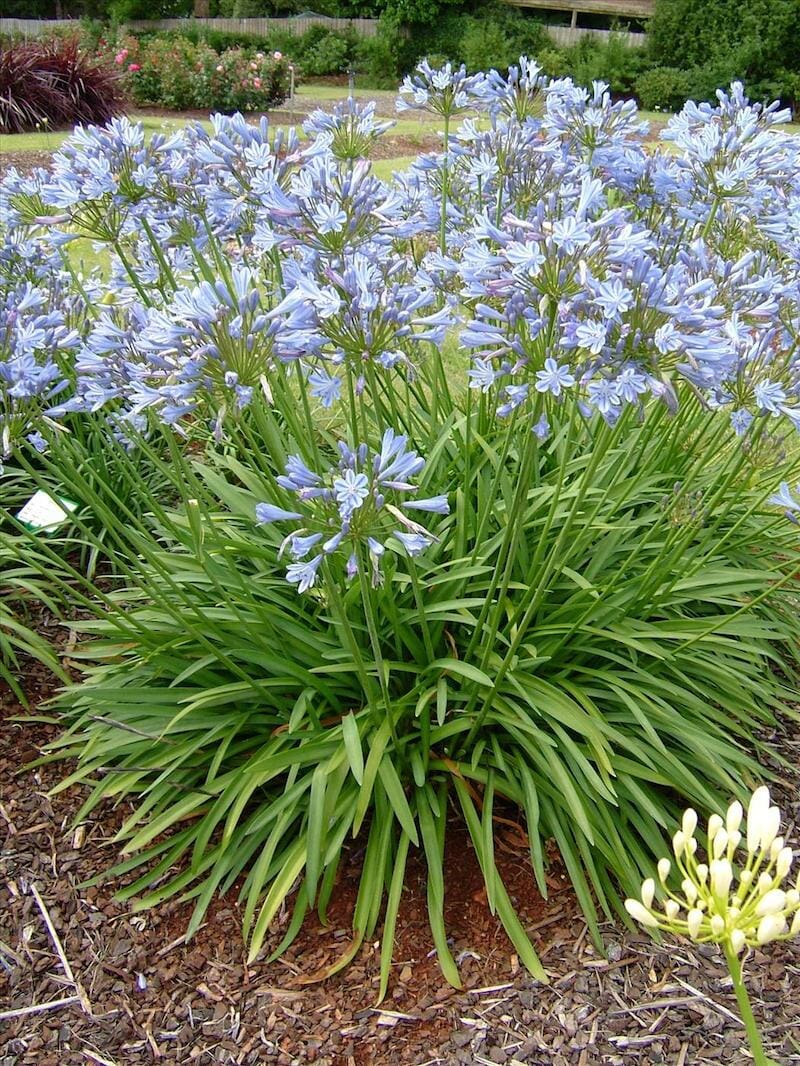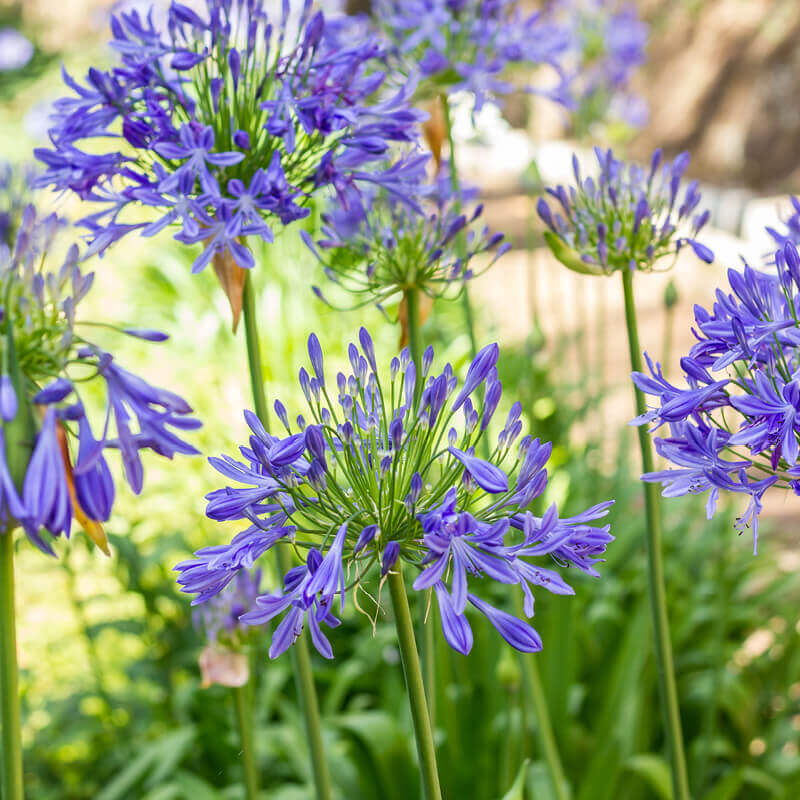Agapanthus Varieties: Selecting the Best for Your Landscape
Agapanthus Varieties: Selecting the Best for Your Landscape
Blog Article
Understanding the Art of Agapanthus Treatment: Essential Actions for Healthy Development and Lively Blossoms
In the world of gardening, the farming of agapanthus stands as a fulfilling undertaking for those that seek to support these sophisticated flowering plants. From selecting the right range to grasping trimming strategies, the trip in the direction of growing growing agapanthus plants is complex and holds the crucial to unlocking the complete capacity of these botanical treasures.

Picking the Right Agapanthus Range

When selecting the appropriate Agapanthus range for your garden, consider variables such as climate viability, blossom color, and development behavior. Furthermore, think about the climate in your region to make certain the Agapanthus variety you pick can prosper in your specific problems. Comprehending the growth habit of different Agapanthus ranges is critical for appropriate placement within your garden.
Suitable Growing Problems
Considering the ideal environmental demands is essential for successful Agapanthus farming. Agapanthus prospers in well-draining soil with a slightly acidic to neutral pH degree. When growing, select an area that obtains full sunlight to partial shade. In hotter climates, offering some mid-day color can stop scorching of the leaves. Agapanthus plants are sensitive to chilly temperature levels and should be shielded from frost during winter months.
To ensure healthy and balanced development and vivid flowers, plant Agapanthus bulbs at a depth of about 2-4 inches and space them 8-12 inches apart. Mulching around the base of the plants aids keep moisture and suppresses weed development.
Watering and Feeding Tips
Keeping appropriate moisture degrees and offering essential nutrients are crucial elements in the care routine for Agapanthus plants. When it involves sprinkling Agapanthus, it is critical to strike a balance. These plants prefer continually moist soil but are at risk to root rot if overwatered. During the growing period, water deeply as soon as a week, making certain the soil is well-draining to protect against waterlogging. In hotter climates or during durations of drought, even more constant watering might be needed to keep the dirt uniformly wet. Nevertheless, lower watering in the wintertime to stop water logged conditions.
Feeding Agapanthus is crucial for advertising healthy growth and prolific flowers. Apply a balanced plant food, such as official website a 10-10-10 formula, in the early spring as brand-new development arises. By complying with these watering and feeding tips, you can ensure your Agapanthus plants flourish and produce lively, long-lasting blooms.
Trimming Strategies for Agapanthus
Pruning Agapanthus plants at the appropriate times and with appropriate strategies is crucial for maintaining their health and promoting optimal development and flowering. The optimal time to trim Agapanthus is in late winter months or very early spring prior to new development emerges.
Deadheading invested flowers can also redirect the plant's power into generating even more blossoms instead than establishing see this here seeds. If you desire to gather seeds for propagation, leave some blossoms to completely dry and fully grown on the plant.
Keep in mind to use tidy, sharp devices to make specific cuts and reduce the danger of introducing illness. Agapanthus. Normal trimming will certainly aid keep your Agapanthus looking healthy and balanced and cool while making certain a plentiful screen of attractive blossoms
Managing Usual Bugs and Diseases
After ensuring correct pruning strategies for Agapanthus, it is necessary to attend to common pests and diseases that can influence the wellness and vigor of these plants. Agapanthus plants are usually sturdy but can still drop sufferer to specific problems. One common insect that impacts Agapanthus is the Agapanthus gall midge. This little, orange fly lays its eggs in the foliage, causing altered growth and flower buds that fall short to open. To combat this bug, trim and destroy any type of afflicted plant parts and think about utilizing insecticidal soap.
Furthermore, Agapanthus plants can experience from root rot if they are grown in inadequately draining dirt. By being attentive and taking timely action versus illness and bugs, you can aid your Agapanthus plants grow and produce dynamic blooms. Agapanthus.

Conclusion
In final thought, understanding the art of agapanthus treatment involves selecting the ideal variety, supplying perfect growing conditions, proper watering and feeding, ideal trimming methods, and addressing typical parasites and diseases. By following these necessary steps, you can ensure healthy and balanced development and vivid blossoms for your agapanthus plants. Remember to consistently keep track of and keep your plants to advertise their total wellness and durability.
To ensure healthy and balanced growth and dynamic blossoms, plant Agapanthus light bulbs at a deepness of look at this web-site concerning 2-4 inches and space them 8-12 inches apart. By adhering to these watering and fertilizing suggestions, you can guarantee your Agapanthus plants prosper and produce dynamic, long-lasting blossoms.
One common insect that influences Agapanthus is the Agapanthus gall midge. In addition, Agapanthus plants can experience from root rot if they are grown in badly draining pipes soil. By following these essential actions, you can guarantee healthy growth and lively flowers for your agapanthus plants.
Report this page